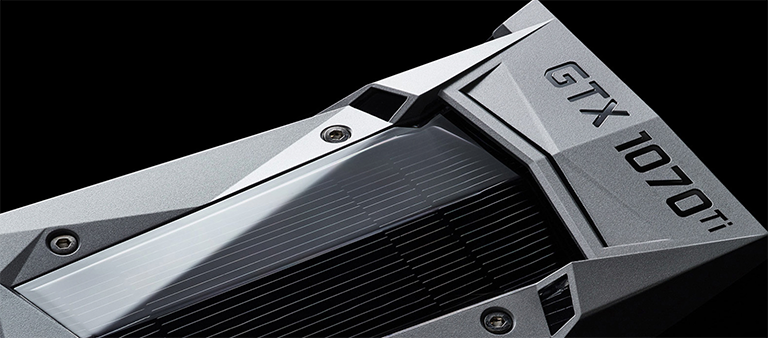Introduction
It's been quiet on the premium GPU front since AMD finally launched the Radeon RX Vega 56 and 64 GPUs in August. Built to offer really good gaming experiences at the enthusiast-friendly 1440p resolution, their performance and pricing gave the widely available Nvidia GeForce GTX 1070 and GTX 1080 GPUs something to think about.
Yet with very few partner Vega cards available and enthusiasts therefore limited to the noisy reference card, rival Nvidia hasn't been moved to do much of anything of late, ostensibly because its slew of Pascal-powered cards have continued to sell well.
Nvidia understands that RX Vega 56 poses a unique problem insofar as its performance sits between the very best, overclocked GeForce GTX 1070 GPUs and entry-level GTX 1080s, with such opportunity available due to the way in which Nvidia has limited the horsepower of the lower card. Typically, a partner-built GTX 1080 is about 25 per cent faster than the same model in GTX 1070 form, due to more shaders and faster memory, and this is the gap that Nvidia wants to fill.
Heck, getting a GPU in this place will give partners something to shout about in the premium space - GTX 1070/80 are well over a year old now. This GPU Pollyfila is the GeForce GTX 1070 Ti, announced last week. As usual, the easiest method of digesting what's new is to look at the specification table, so here we go.
GeForce GTX 1080 |
GeForce GTX 1070 Ti |
GeForce GTX 1070 |
|
|---|---|---|---|
| Launch date | May 2016 |
November 2017 |
June 2016 |
| Codename | GP104-400 |
GP104-300 |
GP104-200 |
| Architecture | Pascal |
Pascal |
Pascal |
| Process (nm) | 16 |
16 |
16 |
| Transistors (bn) | 7.2 |
7.2 |
7.2 |
| Die Size (mm²) | 314 |
314 |
314 |
| Core Clock (MHz) | 1,607 |
1,607 |
1,506 |
| Boost Clock (MHz) | 1,733 |
1,683 |
1,683 |
| Shaders | 2,560 |
2,432 |
1,920 |
| GFLOPS | 8,873 |
8,186 |
6,463 |
| Memory Size | 8GB |
8GB |
8GB |
| Memory Bus | 256-bit |
256-bit |
256-bit |
| Memory Type | GDDR5X |
GDDR5 |
GDDR5 |
| Memory Clock | 10Gbps |
8Gbps |
8Gbps |
| Memory Bandwidth | 320 |
256 |
256 |
| ROPs | 64 |
64 |
64 |
| Power Connector | 8-pin |
8-pin |
8-pin |
| TDP (watts) | 180 |
180 |
150 |
| Current MSRP | $499 |
$449 |
$399 |
Analysis
It's certainly no surprise that GeForce GTX 1070 Ti shares characteristics from its brethren. If you remember back to the GTX 1080 blueprint, the underlying GP104 die calls for 20 SM units each containing 128 shaders, or 2,560 in sum. GTX 1070 uses the same die but is deliberately hamstrung to offer only 15 SMs, or 1,920 shaders.
The 'all-new' GTX 1070 Ti resembles the GTX 1080 most closely, because it only loses one SM in the transformation between models, meaning it has 2,432 shaders. The frequencies are also interesting insofar as the base clock matches the GTX 1080 card while the boost is identical the GTX 1070. A happy coincidence, we think not.
If the front-end is very similar to the GTX 1080, the back-end takes more than a few moves out of the GTX 1070 playbook. The 256-bit memory interface connects to standard GDDR5 memory operating at 8Gbps, so a potential 256GB/s on tap.
And that really is it from a specification perusal. This new card is a Frankenstein of sorts, pulling together bits from two extant GeForce cards to create a Ti version. Pragmatism tells us that it should benchmark closer to the GTX 1080, thanks to significantly more GFLOPS than GTX 1070, and this is exactly what Nvidia wants.
Make no mistake, this is a GPU crafted to hit a price point, which, currently, stands at $449, neatly bisecting the two other GeForce cards we have spoken at length about. Such a base price, in English money, fills the £400-£500 segment that is occupied by AMD's RX Vega 56 and RX Vega 64 and, crucially, one that was somewhat missing from Nvidia's catalogue in mid-2017.
Expect the cheapest, bone-stock GTX 1070 Ti cards to perform like the most-overclocked GTX 1070s while, looking at it the other way, the finest GTX 1070 Tis will perform closely to the most-basic GTX 1080 cards. Perfect segmentation, right?
As UK pricing is already out, expect to pay between £420 and £500 for partner models, with Nvidia's own Founders Edition reference card available directly for £420.
Marking the launch and in for review today is the iChill X3 version from Inno3D, so let's take a closer look on the following page.










